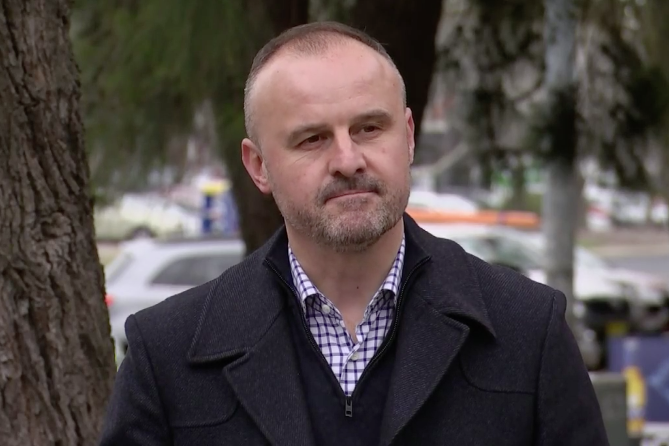
By Poppy Johnston
Apprentices and financially stressed renters in Canberra are in line for cost-of-living support in the ACT’s pre-election budget.
Handing down his 13th budget as the territory’s chief minister on Tuesday, Andrew Barr said the economy was slowing and many parts of the community were enduring living costs pain.
The final ACT budget before its election in October includes a range of “targeted” cost-of-living relief measures, such as one-off $250 payments for apprentices and trainees.
Energy rebates for low-income households have been bumped up by $50 in this financial year and the next, and the rent relief fund will be extended to more low-income households in financial hardship.
Sour economic conditions, high infrastructure and labour costs, and cost-of-living support measures have led to a bigger-than-expected deficit of $830.8 million estimated for 2023/24, heftier than the $442.7 million forecast at the last budget.
Deficits are then expected to shrink in the following two years before public finances claw back into the black in 2026/27, when a $79.7 million surplus is predicted.
The territory’s growth is expected to temper from three per cent in 2023/24 to 2.75 per cent in 2024/25, based on forecasts embedded in the budget.
Growth is then tipped to gradually return to long-run average of 3.75 per cent by 2027/28, as the household sector recovers and home-building picks up as interest rates fall, incomes improve and the population swells.
“While there are risks to the economic outlook associated with uncertainties around inflation and interest rates, the ACT economy remains robust and the outlook for economic activity is positive,” the budget papers said.
The ACT’s population has been growing quickly but the pace is expected to pull back, in line with lower forecasts for nationwide net overseas migration.
Still, Canberra’s population is expected to reach the 500,000 mark by 2027, and growing its housing stock at a faster rate remains a government priority.
In total, more than $285 million will be spent on housing over four years, including an extra $20 million for a fund to boost the supply of affordable rental and community housing.
Stamp duty exemptions will also be expanded and more dwelling sites are set to be released.
Despite higher interest rates and surging construction costs weighing on building activity, housing supply is tracking “marginally” ahead of population growth.
“This will support an increase in rental vacancy rates and an easing of growth in rents and purchase prices,” the budget papers said.
Key infrastructure projects include the Canberra hospital expansion and the light rail, with $50 million for the second stage to Woden announced ahead of the budget.
Like the rest of the country, the territory’s labour market has proved resilient to price pressures and higher interest rates, with the jobless rate lifting to 3.8 per cent in the year to May.
Plans to expand the commonwealth public sector workforce, flagged in the recent federal budget, should keep employment growing with the territory government forecasting a two per cent increase in 2024/25.
Who can be trusted?
In a world of spin and confusion, there’s never been a more important time to support independent journalism in Canberra.
If you trust our work online and want to enforce the power of independent voices, I invite you to make a small contribution.
Every dollar of support is invested back into our journalism to help keep citynews.com.au strong and free.
Thank you,
Ian Meikle, editor




![Evie Hudson is a woman with amnesia, who forgets the last 13 years. Piecing her life back together, she navigates the harsh realities of coercive control.
Evie is the leading character in local author @emmagreyauthor's second novel Pictures of You.
Her debut book, The Last Love Note, sold more than 100,000 books worldwide within a few months of being published last year.
“I think that using amnesia really helped [show the effects of coercive control] because she had that sense of being completely lost in her own life,” Emma says of her new work of fiction.
To read the full story and find out more about this fabulous local author and her latest novel, visit our website at citynews.com.au or click the link in our bio! 📚✒️
#canberra #local #canberralocals #canberralife #australia #author #localauthor #Picturesofyou #coercivecontrolisabuse #dvawareness #bestsellingauthor #canberraauthor #localnews #citynews](https://citynews.com.au/wp-content/plugins/instagram-feed/img/placeholder.png)
Leave a Reply